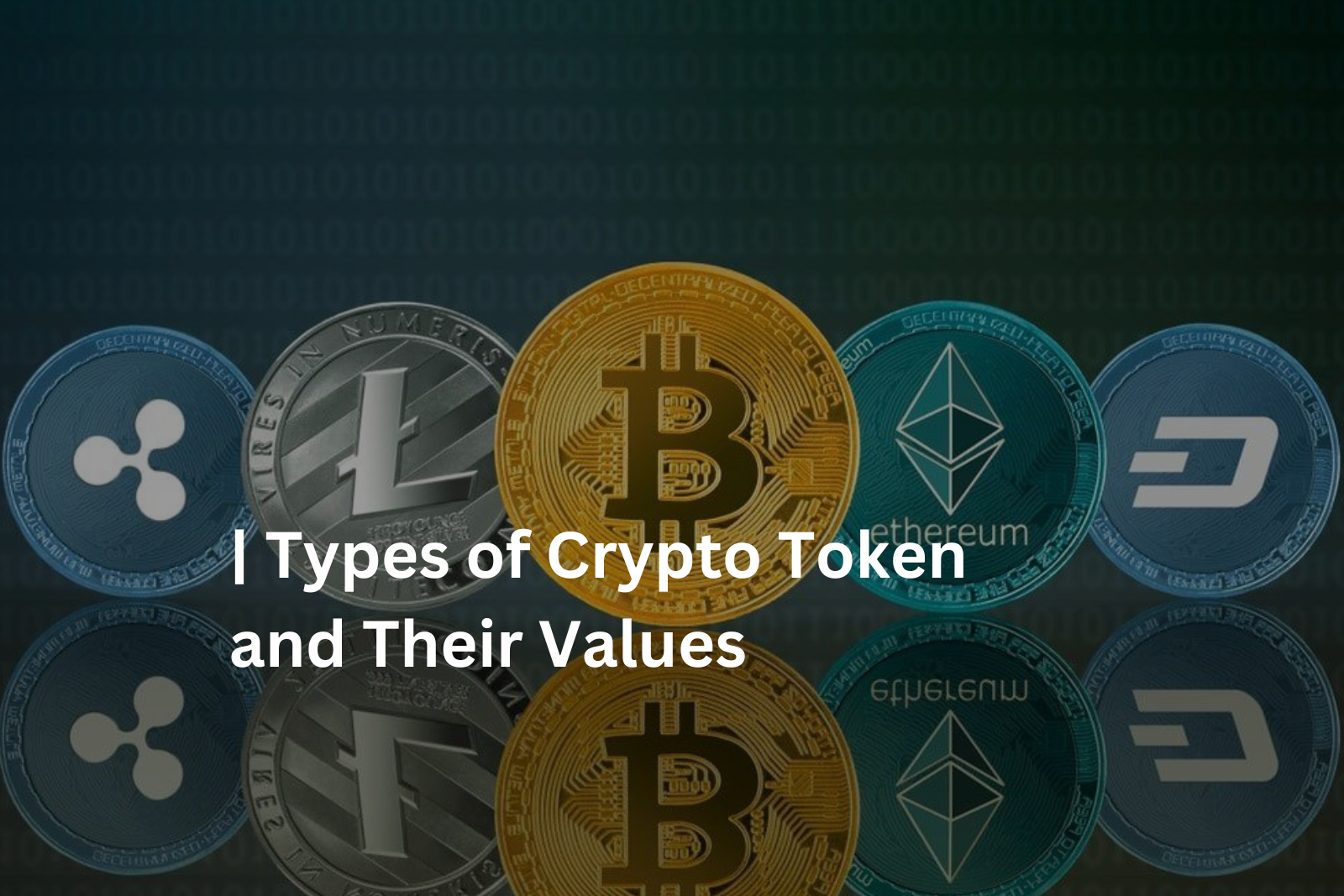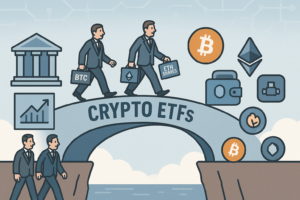
Crypto token play a crucial role in the blockchain ecosystem, each serving different purposes based on their functionalities. Understanding the types of crypto tokens and their values helps investors, developers, and users navigate the digital asset space effectively. This guide explores the various types of crypto token, their significance, and the factors influencing their value in the digital economy.
1. Utility Tokens
Utility tokens provide access to a specific product or service within a blockchain ecosystem. They do not serve as a medium of exchange like traditional cryptocurrencies but instead grant special privileges, discounts, or access to decentralized applications (dApps).
Examples & Values
- Ethereum (ETH) – Powers the Ethereum blockchain and is used for smart contract execution.
- Binance Coin (BNB) – Initially created as a discount token for Binance exchange fees but has expanded into multiple utilities.
- Chainlink (LINK) – Used to facilitate smart contracts with real-world data through decentralized oracles.
Value of Utility Tokens: Their value is driven by the demand for the underlying blockchain platform or service. The more widely adopted a crypto project becomes, the higher the token’s value.
2. Security Tokens
Security tokens represent ownership in an asset, such as company shares, real estate, or commodities, and are subject to regulatory compliance. These tokens function like traditional securities but operate on a blockchain network.
Examples & Values
- Securitize (DS Protocol Tokens) – Enables compliant issuance and management of digital securities.
- tZero (TZROP) – Represents equity in the tZero trading platform, allowing holders to earn dividends.
- INX Token – A regulated security token used for crypto trading and investment.
Value of Security Tokens: Their value is linked to the real-world asset they represent, and government regulations play a significant role in their pricing.
3. Governance Tokens
Governance tokens give holders voting rights on protocol upgrades, changes, and development decisions within a decentralized autonomous organization (DAO) or DeFi (Decentralized Finance) ecosystem.
Examples & Values
- Maker (MKR) – Allows holders to vote on risk parameters and governance of the MakerDAO ecosystem.
- Uniswap (UNI) – Provides governance power over the Uniswap protocol, a leading decentralized exchange (DEX).
- Aave (AAVE) – Used for governance decisions in Aave’s DeFi lending protocol.
Value of Governance Tokens: The more a DeFi protocol grows and requires user participation, the more valuable its governance token becomes.
4. Stablecoins
Stablecoins are cryptocurrencies pegged to real-world assets like fiat currency (USD, EUR) or commodities (gold). Their primary purpose is to reduce volatility in the crypto market.
Examples & Values
- Tether (USDT) – Pegged to the US Dollar, offering a stable store of value for crypto traders.
- USD Coin (USDC) – A regulated stablecoin backed 1:1 by US Dollar reserves.
- Dai (DAI) – A decentralized stablecoin algorithmically maintained through over-collateralization.
Value of Stablecoins: They maintain a steady value, usually at a 1:1 ratio with their underlying asset, making them useful for crypto payments and trading.
5. Meme Coins
Meme coins are cryptocurrencies created as a joke or based on internet memes, but they can gain value through community hype and speculation.
Examples & Values
- Dogecoin (DOGE) – Started as a joke but gained value through celebrity endorsements and strong community backing.
- Shiba Inu (SHIB) – A meme token that built an ecosystem including DeFi features.
- Pepe (PEPE) – A newer meme coin inspired by internet culture.
Value of Meme Coins: Their value is primarily speculative, influenced by social media trends, celebrity promotions, and community engagement.
6. Non-Fungible Tokens (NFTs)
NFTs (Non-Fungible Tokens) are unique digital assets representing ownership of art, collectibles, music, or in-game items on the blockchain. Unlike fungible tokens, each NFT is distinct and non-interchangeable.
Examples & Values
- Bored Ape Yacht Club (BAYC) – A collection of high-value digital art NFTs.
- CryptoPunks – One of the earliest and most valuable NFT collections.
- Axie Infinity (AXS & SLP) – Used in the play-to-earn (P2E) gaming economy.
Value of NFTs: Their value is driven by rarity, demand, and cultural significance in the digital asset market.
7. Privacy Tokens
Privacy tokens enhance transaction anonymity by hiding sender and receiver details.
Examples & Values
- Monero (XMR) – Provides complete privacy using stealth addresses and ring signatures.
- Zcash (ZEC) – Offers optional privacy features through zero-knowledge proofs.
- Dash (DASH) – Includes a PrivateSend feature for anonymous transactions.
Value of Privacy Tokens: Their value depends on demand for privacy in blockchain transactions, regulatory scrutiny, and secure finance applications.
8. Exchange Tokens
Exchange tokens are issued by cryptocurrency exchanges to provide benefits like reduced fees, staking rewards, or governance rights.
Examples & Values
- Binance Coin (BNB) – Powers the Binance Smart Chain (BSC) and offers trading fee discounts.
- FTX Token (FTT) – Previously provided incentives on the FTX exchange.
- KuCoin (KCS) – Used for fee discounts and dividend payments on KuCoin Exchange.
Value of Exchange Tokens: Their value increases as the exchange gains more users and expands its crypto ecosystem.
Key Takeaway of this topic: The value of crypto tokens depends on market demand, blockchain adoption, technological innovation, and regulatory developments. Whether you’re investing in Ethereum (ETH), Bitcoin (BTC), or meme coins like Dogecoin (DOGE), knowing the token’s role is crucial for making informed crypto investments.












